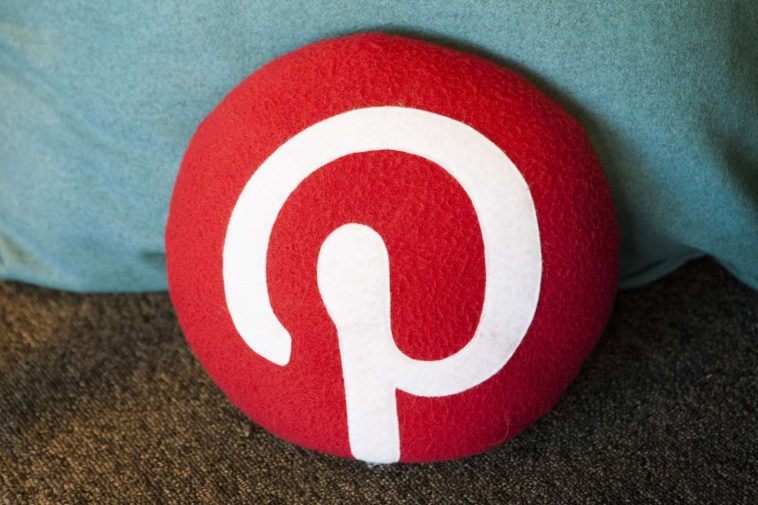Introduction.
If you’re new to marketing, Pinterest might not be the first platform you’d think of, but it’s actually an incredible tool for building brand awareness and driving traffic.
Pinterest is more than just a place for saving recipes and DIY ideas; it’s a powerful visual search engine that connects people to ideas, products, and services they’re excited to explore.
In fact, Pinterest has over 460 million monthly active users, and 85% of Pinners say they use the platform when starting a new project or looking for inspiration—this creates a fantastic opportunity for businesses to reach engaged users with relevant content.
In this guide, I’ll walk you through the basics of using Pinterest for marketing. You’ll learn why Pinterest works so well for businesses, how to set up your profile, create Pins that stand out, optimize for search, and grow your audience—all with beginner-friendly tips and no complex jargon.
By the end, you’ll have a roadmap for using Pinterest to market your business, build a following, and reach new potential customers.
Plus, I’ve added a quick FAQ section to cover common questions, so if you’re still on the fence about Pinterest’s potential, those might help clear things up.
Why Pinterest Is a Great Tool for Marketers
Pinterest is a bit different from other social media platforms. While sites like Facebook, Instagram, and Twitter focus on social interactions and real-time updates, Pinterest works as a search engine.
People go there with a purpose—maybe to plan a wedding, organize a home office, or find a new recipe. When they search, they’re looking for ideas and inspiration, which makes it a valuable place for brands to be.
Pinterest’s unique user behavior also matters. About 80% of Pinterest users discover new products on the platform, and a significant portion of Pinners use Pinterest to make purchasing decisions.
If your content can show up at the right time, it can lead to direct sales, increased website traffic, and brand loyalty.
Setting Up Your Pinterest Business Profile
Creating a business profile on Pinterest is the first step. This profile gives you access to tools like analytics, ads, and insights that personal accounts don’t offer.
Plus, a business profile shows followers that your content is professional, focused, and tailored for marketing.
- Sign Up for a Pinterest Business Account: Go to Pinterest and sign up for a free business account. If you already have a personal account, you can convert it to a business account in your settings.
- Optimize Your Profile: Fill in the details, like your business name, bio, and profile picture (using a logo here is a good idea). Your bio should explain what your business does and what users can expect to see on your page.
- Claim Your Website: Claiming your website is important because it verifies your account and allows you to access more analytics and tracking tools. It also lets you enable rich Pins, which automatically pull information from your website and add it to your Pins.
Creating Engaging Content for Pinterest
Content on Pinterest is primarily visual, so creating eye-catching graphics is a must. However, Pinterest isn’t just about pretty pictures. Content needs to be useful and optimized for search to attract the right people.
- High-Quality Images: Vertical images work best on Pinterest, with a recommended size of 1000×1500 pixels. Bright, well-lit photos and bold text overlay often perform well.
- Clear, Concise Text: If you’re adding text to your images, make it clear and readable. Many users will decide whether or not to click on a Pin just by looking at the text overlay.
- Create a Variety of Pins: Don’t just stick to one type of content. Use a mix of graphics, photos, infographics, and even videos to keep things fresh and appealing.
- Link to Valuable Content: Every Pin should link to something valuable on your website, like a blog post, a product page, or a signup page. This gives users a reason to click through and explore your brand.
Optimizing for Search: Getting Your Content Found
Since Pinterest works as a search engine, it’s important to use keywords strategically so your Pins reach the right audience.
- Do Keyword Research: Think about what people would type in when looking for content similar to yours. You can use Pinterest’s search bar for ideas—start typing in words related to your brand, and see what suggestions pop up.
- Optimize Pin Descriptions: Every Pin has a description area where you can add keywords. Write a short description that explains what the Pin is about and naturally includes keywords that will help it show up in relevant searches.
- Use Hashtags Sparingly: While hashtags are less important on Pinterest compared to platforms like Instagram, they can still help. Include 2-3 relevant hashtags in your description to boost discoverability.
- Make the Most of Boards: Organize your Pins into boards based on themes or topics. Name your boards clearly and add keyword-rich descriptions. This not only makes your profile look organized, but it also makes it easier for people to find the content they’re looking for.
Building and Engaging Your Audience on Pinterest
Getting followers and building a community takes time, but there are a few ways you can grow your reach and keep your audience engaged.
- Pin Regularly: Consistency is key. Aim to Pin 5-10 times a day, mixing your content with others’ content (also known as repinning). This helps keep your profile active and engaging.
- Engage with Other Pinners: Follow other accounts in your niche, engage with their content, and leave comments. This interaction not only builds relationships but also increases the chances that others will follow you back.
- Use Pinterest Analytics: Analytics will show you which Pins are getting the most engagement. Take note of what works well and aim to create more of that type of content.
- Collaborate on Group Boards: Joining group boards or creating one can help expand your reach. Group boards allow multiple users to contribute, which can expose your Pins to a wider audience.
Running Pinterest Ads for Beginners
If you’re ready to invest a little, Pinterest Ads can help boost your reach and increase engagement. Promoted Pins blend seamlessly into the user feed, making them less intrusive and more likely to catch attention.
- Start with a Clear Goal: Do you want to drive traffic to your website, boost brand awareness, or increase sales? Define your goal before launching a campaign.
- Create Targeted Ads: Pinterest lets you target ads by keywords, location, demographics, and even interests. This helps ensure that your ads are seen by people who are most likely to be interested in what you’re offering.
- Test and Optimize: Start with a small budget and test different types of Pins to see which ones perform best. Use analytics to monitor performance and make adjustments as needed.
FAQs
Q: Do I need to spend money on Pinterest Ads to see results?
A: Not at all! While ads can boost your reach, organic (free) strategies can also be effective, especially with a consistent pinning schedule and good keyword use.
Q: How much time should I spend on Pinterest marketing?
A: Start with 15-30 minutes a day to Pin, engage with others, and analyze results. Once you’re comfortable, you might want to spend more time creating original content or exploring ads.
Q: Can I use Pinterest if I don’t sell products?
A: Yes! Pinterest is useful for sharing blog posts, tutorials, or services. People use Pinterest to find ideas and solutions, so educational and inspirational content does well.
Q: How soon will I see results?
A: Pinterest is more of a long-term strategy, so give it a few months. However, some users start seeing increased traffic within the first month with consistent effort.
Wrapping Up
Pinterest can seem a bit mysterious at first, but once you understand the basics, it’s an approachable and rewarding platform for marketers.
By setting up your profile, creating valuable Pins, optimizing for search, and keeping a steady posting schedule, you can start building a following and driving traffic to your site.
So, if you’re looking for a unique way to grow your brand and connect with new customers, why not give Pinterest marketing a try?
What’s your biggest question or challenge about using Pinterest for marketing?





GIPHY App Key not set. Please check settings